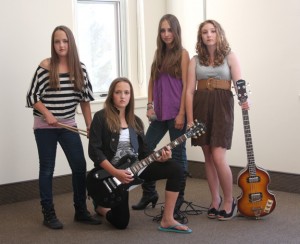By Hal Walter
There was a “Wide Load” approaching, and the truck traveling ahead in our lane hit the brakes. I in turn hit my brakes, and that’s when Harrison lost his lunch.
I pulled over to the first pullout along the Arkansas River on U.S. 50 to assess the vomit damage. We had no change of clothes, no wipes, and precious little time before Temple Grandin was to begin her lecture, “Autism, Animals and Visual Thinking,” at the Buena Vista High School gym.
The first thought was to just turn around and go home. But then I realized the Salida Wal-Mart was closer than home at this point. At least we could get a change of clothes, a cheap towel to fashion a makeshift booster chair cover, and something to clean up Harrison and the car. A pit stop there, and some food from Amica’s to go, and we found ourselves in a packed gym well before Temple took to the stage.
Who is Temple Grandin? Many do not seem to know of her, and if you don’t I recommend the movie “Temple Grandin,” which won five Emmy Awards in 2010. She also has written several fine books, including “Animals in Translation,” “Animals Make Us Human,” and “Thinking in Pictures.”
If you are the parent of a child with autism, perhaps Temple Grandin personifies hope – she’s autistic but is a university professor and has designed many livestock handling facilities in the U.S. If you work with animals, Temple Grandin offers a picture of how animals see things. And if you are someone who may be on the “neurodiversity” spectrum, Temple Grandin helps provide meaningful insight.
So for me, her talk was valuable on several levels. And actually, her entertaining sense of humor caught me totally by surprise.
For example she described the autism spectrum as including a wide range of people from those who are non-verbal to Einstein – “and half of Silicon Valley.” Later she described “geeks, nerds and aspergers” as being the same thing, and referred to diagnosing autism as “behavioral profiling.”
She expressed disgust at the wholesale use of drugs to treat autism, and suggested instead that parents consider dietary adjustments and more exercise to help their children.
Grandin stressed the need for more participatory learning opportunities, as opposed to theoretical, to give those with different minds an opportunity to learn. She said it’s disappointing schools have stopped offering classes in subjects like sewing, autoshop, welding, and other educational programs where students actually learn to make or do something. She thinks this has carried over into society at large and it concerns her that our work force is becoming less and less able of making and fixing things. I agree.
In reading Grandin’s books I realized that I had already arrived at many of the same conclusions and techniques in my dealings with animals, though I had never really put words to any of them as she has. A person who learns to see things the way animals do develops a manner of approaching them, and also starts to look ahead for things that may spook them, like a flapping flag or a glint of light – animals notice these things as part of the overall picture, while most people only see a “generalized image.”
There was a point during the lecture when my son ran out onto the gymnasium court where Grandin was speaking. She turned and looked at him and then took a few moments to collect her thoughts. I wondered if she could tell or if she wondered if he was autistic.
A few moments later she was discussing different sensory issues, and mentioned something she called “slow attention shifting.” She used the interruption caused by Harrison as an example to demonstrate how when her train of thought is disturbed it takes a while for her to get it back on track.
Ironic as it was that my son provided the example, I realized as soon as she said it that I too have this issue. When I get interrupted while talking, working or even doing the dishes, it’s difficult for me to regain my focus. Or, more specifically, it takes me much longer than most people to get back to the task.
Grandin’s latest book, The Way I See It is largely about visual thinking. She see things in pictures. As an example she offered Van Gogh’s “Starry, Starry Night” (one of my favorite paintings) as a visual thinker’s interpretation of some rather complex mathematics. Verbal communication, she says, tends to cloud some ways of thinking.
It’s not often that we get the chance to hear someone of Temple Grandin’s quality speak here in Central Colorado. In what I thought was her best quote of the night, she said: “When you’re weird you have to sell yourself.” The statement brought cheers from the crowd, and I thought how so many of us have our quirks, not excluding the choice to live in this particular geographic region.
That little token of wisdom made the entire drive, vomit and all, worthwhile.
Hal Walter writes and edits from the Wet Mountains. You can keep up with him regularly at his blog: www.hardscrabbletimes.com


